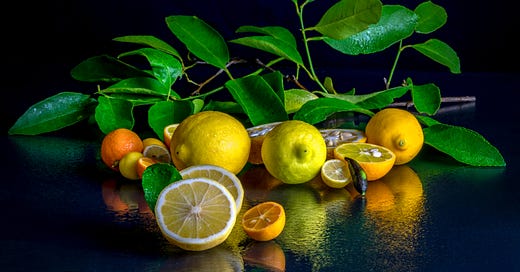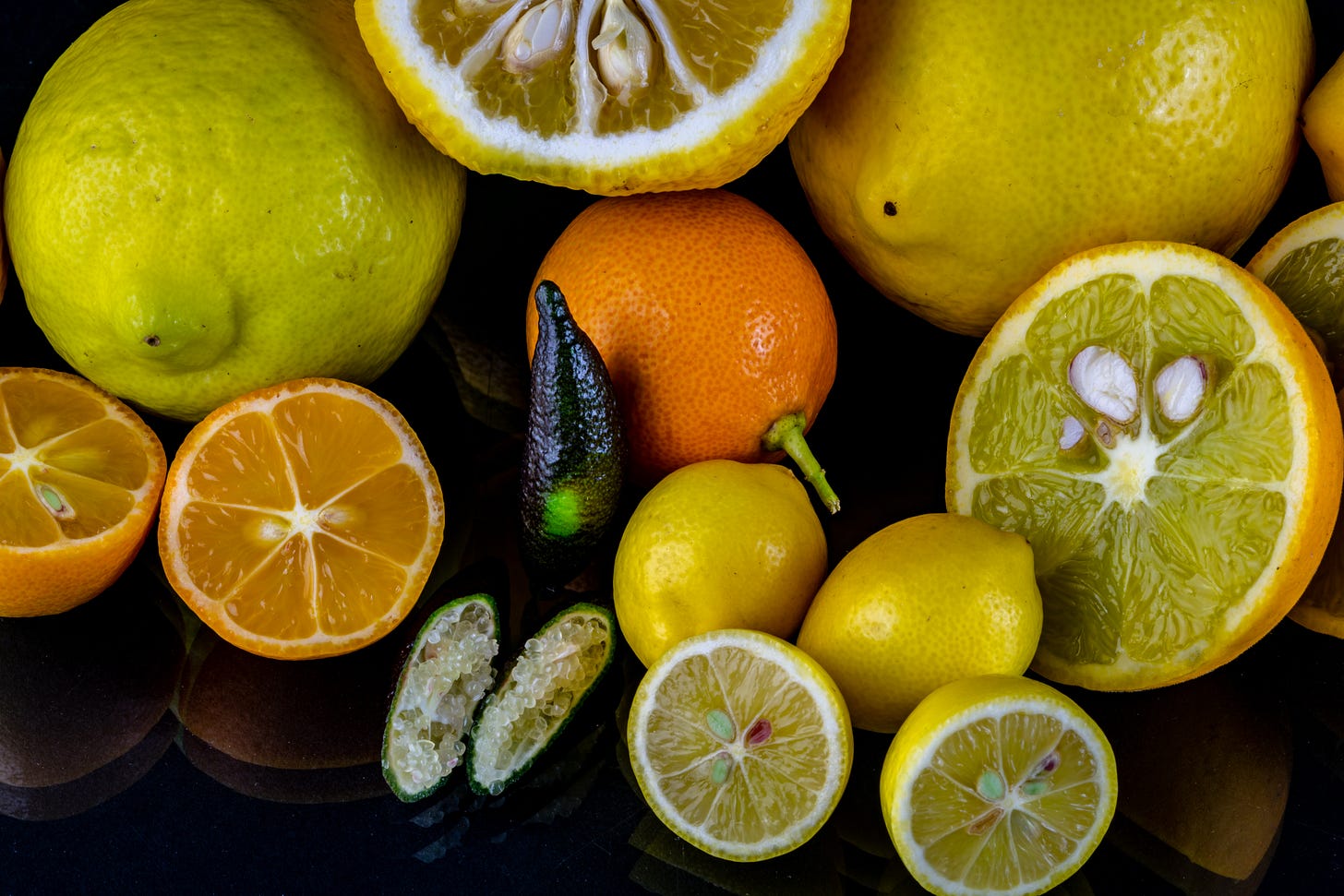NAPA VALLEY, Calif. — Due to my great-great-grandfather’s success at planting citrus groves in the 1870s, I was told at an early age that orange juice flowed through my veins. Those historic California orange and lemon orchards were eventually replaced with hundreds of characterless tract homes, but I can resurrect a Proustian memory whenever I smell orange blossoms. That unique scent still ignites memories of dense, glossy green foliage and colorful fruit, a fragrance that etched a happy home into my brain and informed a lifelong passion for all things citrus.
There are so many different types of citrus to enjoy, and fortunately for us, Napa Valley’s Mediterranean climate lends itself admirably to citrus cultivation. Citrus fruits are in the Rutaceae family, which includes oranges, lemons, grapefruits, pomelos and limes, and are characterized by attractive evergreen foliage and bountiful harvests. They are relatively easy to grow in most gardens and can be maintained as large, compact shrubs with minor pruning.
With few pests and so many benefits, citrus makes a great addition to Napa Valley gardens. If space is an issue for you, be aware that many citrus plants also perform well in pots on the patio.
But which citrus? An obvious first choice is the Washington navel, perhaps California’s most commonly planted orange. It came to California via Brazil in the 19th century. Prized for its sweet, seedless fruit, it blooms in the spring and matures in early winter, just in time for winter holiday celebrations.
The Valencia orange is highly valued for juice and produces throughout the spring and summer. For even the most inexperienced gardener, a mini-orchard of Valencia and Washington navel trees can deliver a near-nonstop supply of fresh juice.
And let’s not forget the blood orange. As its name suggests, it yields a garnet-red sweet juice, a central ingredient in sangria and a flavorful addition to salads, sauces and desserts.
Perhaps the most utilitarian of all citrus is the lemon. Eureka and Lisbon lemon varieties thrive in the Napa Valley and produce abundant crops once they reach maturity. The Meyer lemon, with its orangelike scent, is also a favorite in home gardens, but some may find its low-acid flavor deviates from an authentic “lemon” taste. The fruits have many seeds and thin skins with very little pith, but they have a limited shelf life, so they don’t show up often in supermarkets. However, you can often find them in small local markets and at the Napa Farmers Market in winter and early spring.
The lime is a universally beloved flavoring for everything from beverages to desserts, as well as a wonderful substitute for lemon juice, especially with seafood and chicken. There are numerous varieties of lime, such as Key lime (Mexican lime) and Bearss lime (also known as Persian or Tahitian lime). The so-called finger-lime tree produces an elongated finger-shaped fruit that can be used in just about any dish calling for lime.
More exotic citrus varieties to consider include Buddha’s hand, noted for its weird fingerlike appendages and sweet, tangy flesh; calamansi; and the bergamot orange. Calamansi, also known as kalamansi or calamondin, is native to the Philippines and cultivated throughout Southeast Asia. The marble-size fruit has seeds but is prized for its delightful floral tartness. I first sampled it in Manila in the form of a memorable calamansi meringue pie.
Bergamot, or Citrus bergamia, is a relatively rare citrus native to Calabria, a region of southern Italy. This superfruit is prized for its health benefits. Its unique polyphenols promote healthy cholesterol levels and cardiovascular health.
The bergamot’s wartlike skin and strong, somewhat bitter taste render it less than appealing for culinary use. However, it is essential in flavoring Earl Grey tea. The French Laundry has used locally grown bergamot in dishes such as Matcha and Orange Délice With Bergamot and Vanilla Sherbet.
Most citrus trees can tolerate light frost, but fruit can be damaged if the temperature remains below 29 F for more than 30 minutes. Planting on the south side of the house or garden can reduce the impact of local frost. Stringing incandescent holiday lights through the branches can also help raise the temperature.
Citrus thrives in Mediterranean climates so irrigation in the winter and spring is essential, but don’t overdo it during summer and fall. As for pruning, most varieties require little more than occasional shaping. Remove dead branches and interior branches to promote air circulation.
Overall, citrus plants are easy and rewarding to grow. Whatever species you select, it likely will have been grafted onto disease-resistant rootstock. Be patient. Most citrus will not produce fruit for the first few years, but once established, the abundance may astound you. It won’t be long before your harvest outpaces your needs. But unlike trying to unload surplus zucchini, finding a home for oranges and lemons is never a problem. Friends and neighbors will happily share your excess.
Library Talk: Join UC Master Gardeners of Napa County for “Growing Lettuce Year-Round in Napa County” on Thursday, Feb. 1, from 7 to 8 p.m. via Zoom. Learn how a seasonal field trial revealed lessons about growing lettuce in Napa County. Register to receive the Zoom link.
Pruning Workshop: Join UC Master Gardeners of Marin County for “Winter Pruning of Deciduous Trees” with Nancy Brown on Wednesday, Feb. 7, from 10 a.m. to 1:30 p.m. via Zoom. Brown is a professional aesthetic pruner and experienced lecturer. Whether you are pruning a deciduous tree or renewing an overgrown or poorly shaped one, this class will demonstrate best practices for tree beauty and health. Cost is $30. Register to receive the Zoom link.
Help Desk: The Master Gardener Help Desk is available to answer your garden questions on Mondays and Fridays from 10 a.m. until 1 p.m. at the University of California Cooperative Extension Office, 1710 Soscol Ave., Suite 4, Napa. Or send your questions to mastergardeners@countyofnapa.org. Include your name, address, phone number and a brief description. For best results attach a photo.
Tom Hixson is a UC Master Gardener of Napa County.







Really enjoyed this piece! So much good information about different citrus possibilities. Thank you.
A wonderful article and an amazing reference!